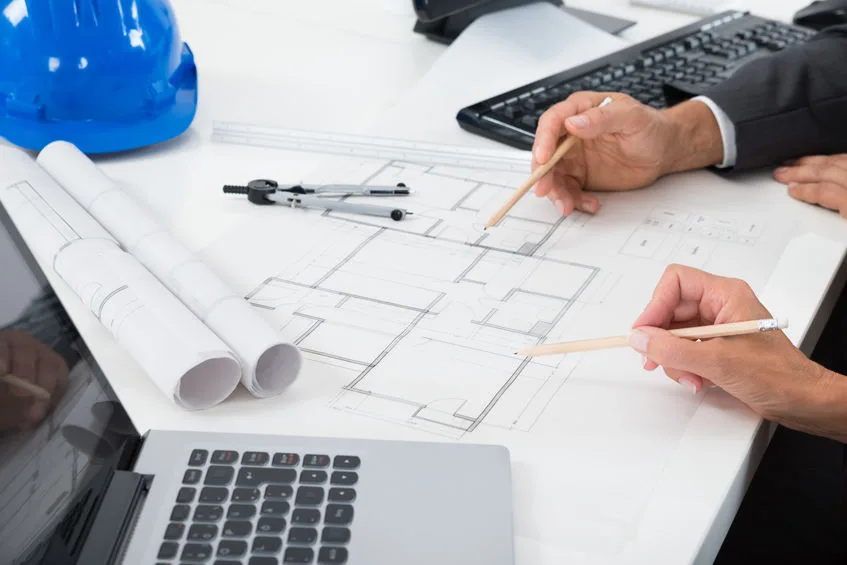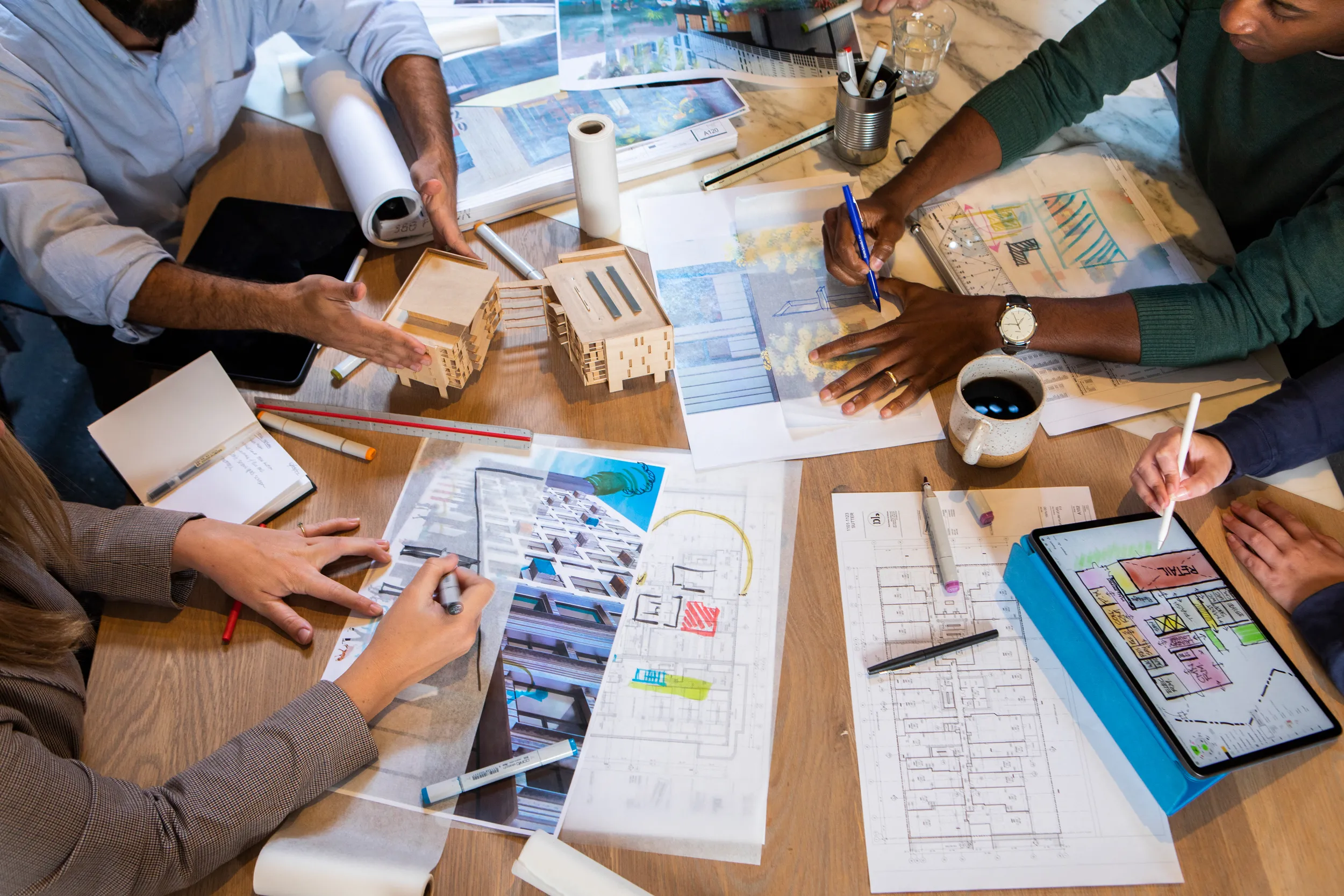Architect Advice on Optimizing Compact Urban Spaces
Architect Advice on Optimizing Compact Urban Spaces
Blog Article
Comprehending the Diverse Occupation Paths Available for Aspiring Architect
As an aspiring Architect, you have a globe of job courses awaiting you. Each course provides unique obstacles and opportunities to use your creative thinking and technical expertise. Whether you're attracted to typical style or the subtleties of lasting design, there's a specific niche that straightens with your passions. Understanding these varied choices can shape your specialist journey, however which instructions will you select to explore first?
Conventional Architecture: Designing Structures and structures
Conventional style focuses on developing buildings and structures that mix functionality with visual allure. As you discover this field, you'll appreciate the complex balance in between kind and objective. You'll learn to draw ideas from historical styles, including elements like symmetry, materials, and workmanship. Your styles can reflect cultural heritage, showcasing regional practices while satisfying modern-day needs.
You'll develop abilities in composing, model-making, and site evaluation, allowing you to envision and interact your ideas efficiently. Involving with customers, you'll require to comprehend their vision and translate it into possible designs.
Moreover, constructing codes and sustainability methods are necessary in your work, guaranteeing your frameworks are ecologically pleasant and risk-free. As you grow in your profession, you'll locate possibilities in residential, industrial, or even restoration tasks, each offering one-of-a-kind challenges. Welcoming standard design leads the way for a meeting job that pays homage to the past while forming the future.
Urban Planning: Forming Neighborhoods and Public Spaces
As an ambitious Architect, you can play a crucial role as an urban planner, transforming exactly how areas work and interact. By employing community engagement strategies, you'll assure that residents have a voice fit their environment. Plus, integrating lasting style concepts will certainly help produce areas that not only fulfill today's requirements yet additionally shield the future.
Role of Urban Planners
While lots of might consider designers as the sole enthusiasts behind buildings, metropolitan coordinators play a crucial function in forming the broader landscape of neighborhoods and public rooms. They assess land usage, zoning laws, and community needs to produce sustainable settings that improve quality of life. By teaming up with various stakeholders, you'll assist develop parks, transportation systems, and household locations that promote social interaction and access. Urban organizers additionally concentrate on ecological considerations, guaranteeing that developments integrate green rooms and assistance biodiversity. Your expertise in spatial layout and area dynamics permits you to visualize future growth while maintaining social heritage. In this crucial role, you'll directly influence how people experience their environments, making every project an opportunity for positive modification.
Area Engagement Strategies
Effective neighborhood involvement strategies are crucial for metropolitan planners to guarantee that the voices of locals are listened to and valued in the preparation procedure. To foster meaningful dialogue, you need to focus on open forums and workshops where neighborhood members can express their ideas and concerns. Usage surveys and social media sites to reach a broader audience, guaranteeing varied perspectives are included. Teaming up with neighborhood companies can boost trust fund and help with much deeper connections. It is necessary to give clear details concerning proposed projects and decision-making procedures, permitting locals to feel enlightened and empowered. By actively incorporating and listening comments, you'll develop spaces that show the neighborhood's requirements, eventually resulting in even more effective and sustainable metropolitan environments. Welcome openness and continuous discussion for long-term impact.
Lasting Layout Principles
When developing urban spaces, integrating lasting design concepts is crucial for developing atmospheres that flourish both environmentally and socially. Consider integrating eco-friendly areas, like yards and parks, to enhance biodiversity and boost air top quality.
Creating with water conservation in mind is likewise vital-- think of rainfall gardens and permeable surface areas to take care of stormwater. Involving area members throughout the planning procedure guarantees that the areas you produce meet their requirements and motivate social interaction. By welcoming these principles, you'll add to lively, lasting metropolitan landscapes that profit everyone.

Landscape Style: Creating Sustainable Outdoor Settings
As you explore landscape style, you'll uncover necessary layout principles that develop functional and lovely outside areas. Sustainable practices play a crucial duty in making certain these atmospheres grow while minimizing ecological impact. And also, you'll locate a range of profession possibilities that enable you to make an actual difference in just how individuals interact with nature.
Design Concepts in Landscape
Recognizing layout concepts in landscape style is vital for developing sustainable outside atmospheres that balance with nature. You'll require to contemplate aspects like range, equilibrium, and proportion to ensure your layouts feel natural and inviting. In addition, pay attention to seasonal modifications, making with products that enhance the environments year-round.
Sustainable Practices Review
Sustainable practices in landscape design not only concentrate on looks but additionally prioritize eco-friendly health and source conservation. You can create spaces that advertise dirt health and wellness, such as utilizing organic materials and practicing permaculture check my source concepts. Inevitably, these methods ensure your styles benefit both people and the environment for years to come.
Job Opportunities Exploration
With a strong structure in sustainable methods, landscape architecture uses a range of career courses that enable you to make a significant influence on the environment. You can function as a landscape designer, developing aesthetically pleasing and practical outside spaces, or focus on eco-friendly remediation, aiding to revive broken environments. Urban planners usually team up with landscape architects to create environment-friendly rooms in city setups, boosting city livability. If you're enthusiastic regarding education, think about coming to be a landscape architecture instructor, motivating future generations. Additionally, you might function with nonprofits concentrated on environmental sustainability or participate in research to innovate brand-new techniques. Each path not just shapes beautiful atmospheres however likewise promotes a healthier world for future generations.
Sustainable Style: Concentrating On Eco-Friendly Practices
As you discover your profession in design, embracing green practices can set you apart in a competitive area. Sustainable style focuses on creating structures that reduce ecological influence while enhancing owner well-being. By incorporating sustainable products, energy-efficient systems, and lasting building strategies, you'll contribute to a greener future.
Start by getting understanding of eco-friendly accreditations that site like LEED or BREEAM, which can reinforce your credentials. Think about just how all-natural light, ventilation, and thermal performance can optimize layout. Collaborate with engineers and environmental professionals to introduce services that reduce waste and conserve sources.
Do not forget the significance of neighborhood involvement-- engaging regional stakeholders can inspire designs that balance with the environment. As customers progressively focus on sustainability, your competence in environmentally friendly methods will not only bring in jobs but additionally accomplish your interest for liable style. Embrace this critical facet of the profession, and enjoy your job prosper.
Historic Conservation: Securing and Restoring Cultural Heritage
While you commence on your building journey, think about the crucial role of historic preservation in keeping our cultural heritage. This area concentrates on the protection and remediation of considerable buildings, sites, and frameworks that tell the stories of our past. By participating in historic conservation, you'll help guard the building tradition that shapes area identification.
As a historical conservation Architect, you'll examine historic value and evaluate the condition of frameworks. You'll work closely with preservationists and chroniclers to guarantee authentic remediation strategies are used. This occupation path enables you to blend imagination with study, allowing you to develop services that value initial materials and workmanship.
Your job not only contributes to read this post here sustainability by reusing existing buildings but likewise cultivates a sense of pride within areas. Embracing this course will certainly aid you end up being a guardian of background, maintaining the stories and aesthetics that improve our lives.
Inside Style: Enhancing Indoor Spaces
Historical preservation and interior architecture both share a dedication to improving the constructed setting, but they concentrate on different aspects. While historic preservation stresses preserving a structure's historic and cultural worth, indoor style zeroes in on optimizing interior areas for performance and aesthetic appeals.
As an ambitious Architect, you'll find that indoor style permits you to blend creative thinking with technical abilities. You'll create rooms that not only look good but also promote convenience and performance. This area entails understanding exactly how light, shade, and products interact within a space, influencing mood and use.
You'll service different tasks, from domestic homes to commercial offices, making certain that each environment satisfies the needs of its residents. By prioritizing customer experience, you can change insides right into motivating and useful spaces, making a substantial influence on how individuals communicate with their surroundings. Accept the opportunity to enhance interior environments and shape the way people live and function.
Industrial Style: Combining Capability With Aesthetic Appeals
Commercial design plays an important role in developing items that effortlessly mix visual appeals with performance, ensuring that what you use everyday is not just visually appealing but additionally useful. As a hopeful Architect, you can involve yourself in this field, concentrating on developing every little thing from furniture to consumer electronic devices. Your work entails understanding individual demands, materials, and producing processes, enabling you to create cutting-edge services that improve everyday experiences.
In commercial style, you'll usually collaborate with designers, online marketers, and manufacturers, making certain that your designs are not just beautiful however additionally feasible. You'll discover to balance kind and feature, focusing on usability without giving up style. By refining your abilities in laying out, 3D modeling, and prototyping, you'll be well-equipped to bring your ideas to life. This profession course offers a vibrant setting where creative thinking meets usefulness, making it a gratifying option for engineers interested in shaping the items of tomorrow.
Frequently Asked Inquiries
What Educational Accreditations Do I Need to Become a Designer?
To come to be an engineer, you'll need a specialist degree in architecture, typically a Bachelor's or Master's. In addition, you'll need to complete an internship and pass the Architect Enrollment Assessment to exercise legally.
Are There Accreditation Demands for Different Architectural Career Paths?
Yes, there're accreditation demands for numerous building courses. Architect. You'll need to pass exams, total internships, and occasionally go after specialized training, relying on your selected focus, like landscape design, metropolitan layout, or historic preservation
What Software Program Skills Are Vital for Engineers Today?

Just How Can I Gain Practical Experience While Studying Architecture?
You can gain functional experience by interning at building companies, taking part in layout competitors, offering for community jobs, or collaborating with classmates on real-world jobs. These opportunities enhance your skills and construct beneficial connections in the market.
What Task Opportunities Exist Outdoors Typical Architecture Firms?
You can discover various job opportunities outside conventional architecture firms, like metropolitan preparation, interior decoration, landscape architecture, building monitoring, realty advancement, or perhaps functions in sustainability consulting. Each offers special difficulties and incentives.
Whether you're drawn to typical design or the nuances of sustainable design, there's a niche that straightens with your interests.When developing metropolitan rooms, including lasting design principles is crucial for creating environments that thrive both ecologically and socially.As you explore landscape architecture, you'll uncover vital design concepts that develop stunning and functional exterior rooms.Understanding style principles in landscape style is essential for producing lasting outside atmospheres that harmonize with nature.In commercial style, you'll usually team up with designers, producers, and marketing professionals, guaranteeing that your designs are not only lovely yet additionally possible.
Report this page